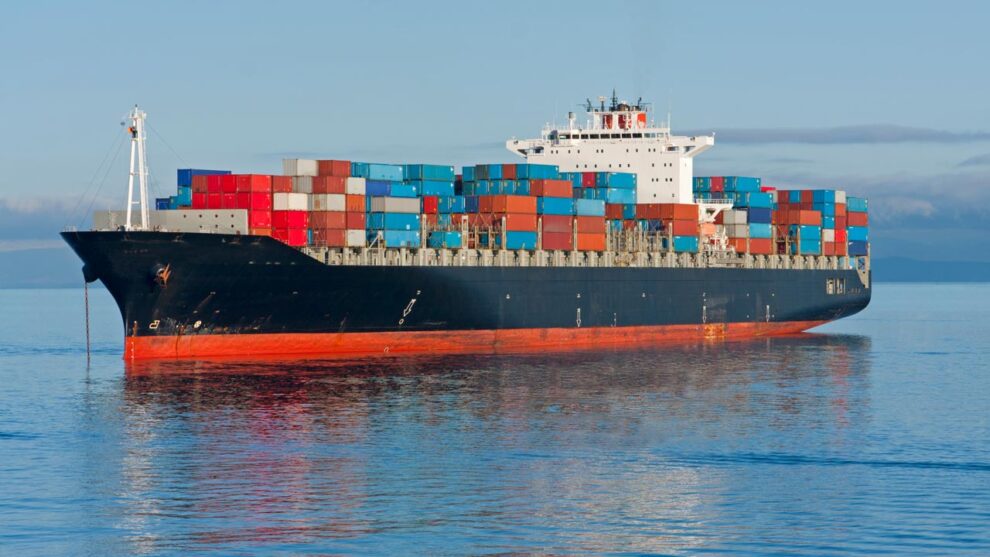In Nigeria, the federal government through the Nigerian Ports Authority (NPA), is currently driving port efficiency through digitalisation and planned rehabilitation of collapsed port infrastructure such as quay aprons, venders among others for global competitiveness.
The NPA’s aggressive drive for increased revenue generation would only be driven by port efficiency, digitalisation and reconstruction of dilapidated port super structure.
However, to make it possible for Nigerian ports to take up its natural position as a maritime hub for countries in West and Central Africa, NPA has enforced strict digitalisation of all its processes.
The digitalisation reform introduced by the current management of NPA led by Mohammed Bello-Koko has endeared Nigeria port to importers in neighboring West and Central Africa.
For instance, since Lekki deep seaport started commercial operation, some countries in the West and Central African sub region have started using Nigerian seaports particularly Lekki Port, as a transshipment base for their imports
Consequently, the achievements recorded by the NPA management in its quest for total rehabilitation or reconstruction and automation of the Nigerian Ports have been due to the great emphasis which Bello Koko placed on the transformation of the operations of the Ports since his appointment in May 2021.
The achievements have been in the realm of the total rehabilitation and upgrade of Ports facilities and the improvement in the digitalisation of their processes that requires automation so that the Nigerian ports can become revolutionised and comparable with others in the advanced maritime nations.
Also, some ports in Nigeria need total upgrade of their facilities and the automation of their processes and operations became more germane. It was realised that almost all their infrastructure such as the quay apron have been overdue for reconstruction, because they have been in existence for over 70 years and beyond and these are infrastructure with about 45- 50 years lifespan.
In the list of the ports which most of the infrastructure such as the quays have decayed and required reconstruction are the Lagos Seaports, Apapa; Tin Can Island port; Port Harcourt and Calabar Ports. Some of these facilities of even the relatively new Onne Ports also needed to be salvaged because the quays can no longer withstand the remedial works being carried out on them.
Thus, it is in his quest to achieve the type of seaports which infrastructure will be standard and modern and which operations would be highly information technology (ICT) driven that the NPA management resolved that it requires a sum of $800 million to fund the total rehabilitation and automation of some of the Ports.
The fund will specifically be used for the reconstruction and rehabilitation of the infrastructure of the Tin Can Island berths 4 to 14; Calabar; Onne Ports; the Warri Port Jetties, rehabilitation of the Escravos breakwaters as well as the upgrade of the digitalisation of the processes and operations of the seaports.
The management as well planned to reconstruct the quays to ensure that they are safe for usage and for them to be able to withstand the planned deepening of the existing channel draft in some of the ports including those in Lagos and others.
However, at a time the management was cut between securing the fund for the project through a loan from any of the foreign multilateral lending institutions or using part of the NPA revenue for the work, a development, which would, however, reduce its contributions to the CRF, but the administration of former president Mohammadu Buhari opted for the loan option.
This is because while the Port act permits the NPA to use up to 50 per cent of its revenue for the rehabilitation of its operations, the Fiscal Responsibility Act and Finance Act do not allow it to spend more than 80 per cent while its financial contribution to the CRF will decline if it has to use part of its revenue for the project. This largely informed government’s lack of nod for the Authority to self finance the project.
Consequently, the international lending institutions that were considered include the French Development Agency(AFD); African Development Bank (AfDB); European Investment Bank(EIB); among others, but the NPA management seemed to have opted for the African Export- Import Bank (AFREXIM) with which it has been in discussion and very hopeful to secure the loan
The idea is that the NPA will borrow money for a period of 10 years with three years moratorium, meaning that provisions that would be made for the payment of that loan, would make the repayment to kick off in either 2024 or 2025.
However, as the loan is being awaited to finance the total rehabilitation and digitalization projects, the management has been providing vital facilities and equipment, required for the provision of improved services to port users as well as carry out some rehabilitation works in the seaports under the NPA’s control in the West and Eastern parts of the country.
But, as the management awaits the loan, it has concerned itself with the implementation of full automation of the ports operations in the country.
The current management has since its inception adopted deliberate measures of undertaking investments with a view to creating a fully digital ecosystem in all the port locations by 2025.
This is hinged on its conviction that a digitalised port helps in making better informed operational decisions, increases efficiency, improves collaboration amongst stakeholders, and lower port costs as well as assist to meet the ever increasing customer expectations in a timely manner.
This is why the Bello Koko- led management has already gone deep into the process of deploying at the ports before the end of this 2023 what is called the Ports Community System(PCS), which is an electronic platform that will link all the stakeholders in the Port system for purpose of communication and enhancement of delivery and clearing of goods.
The International Maritime Organisation (IMO) which is the Consultant to the NPA has paid the fees to the technical consultant on the project for the first and second phases, as it offered to do while the project is set to enter the third stage.
Already, in the first and second stages of the project, NPA has been able to get the stakeholders in the maritime industry with a view to bringing them all to the Platform.
Consequently, the consultant has studied what each one of the aforementioned agencies has in place in terms of IT deployment and automation, while in the next stage , which is the third stage , it will do an analysis of what is needed to be able to deploy the PCS.
Invariably, the plan of the NPA management is for the PCS to serve as a catalyst for the National Single Window, which is a Platform that is superior to the PCS and which enables trade facilitation and speeds up the processes of documentation for importers and exporters.
However, beyond the deployment of the PCS, the authority has been focusing on the smartness level of the port, rather than the size of the port in order to optimise productivity and meet the expectations of port users.
This is why on its implementation of the five-year plan for the attainment of a fully digitalized port system in Nigeria, it had deployed a portfolio of systems and infrastructure towards the actualization of its ICT objectives.
These include Oracle Enterprise Business Suite for financial and human resources planning; Billing/Revenue and Invoice Management System (RIMS) to fast-track billing processing; Customer Portal/electronic Ship Entry Notice (eSEN)/Manifest Upload for shipping traffic management.
Others are Hyperion Budgeting for management of annual budget; Command, Control, Communication and Intelligence System (3Ci) for maritime domain awareness, management of vessel calls; truck call up and gate access control for the control and schedule of trucks to the ports as well as manage truck traffic around the ports corridors particularly in the Lagos Ports.
Before the existence of the current management a lot of work had gone into the smart port transformation agenda of the authority, aimed at the enthronement of paperless, time-saving and cost-efficient port operations, but the Bello Koko ‘s leadership should be lauded for the improvement it has effected in this area..
Lastly, the Bello Koko – led management has so far demonstrated high level of administrative competence and prudence in the management of the affairs of the NPA and considering that the transformation of the ports are key on its agenda, it is expected that it would ensure that the expected loan would be secured and judiciously utilised.
This, if done, would make the infrastructure of the nation’s seaports to be in good condition, enhance port operations and processes.
Also, the expected full automation will make it possible for the Apapa and Tin-Can ports serve as effective feeders for the Lekki Deep Seaport and, thereby, make Nigeria a true hub in West and Central Africa.
Source: Leadership
















